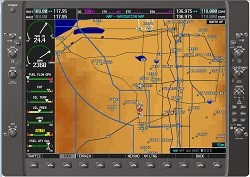
BRIDGE BETWEEN CPL AND ATPL
Crew resource management (CRM) ground school classes and standard operating procedure (SOP) simulator sessions are available for pilots who did not graduate from an Integrated Airline Pilot License (iATPL) course but would like to receive some of the training associated with multi-crew cooperation (MCC).
The classes allow non-iATPL students the option to participate in CRM ground school classes and SOP simulator sessions as stand-alone modules. There is no certificate for your participation in these classes, nor any additional pilot privileges granted as a result.
The CRM ground school class and SOP simulator sessions can be purchased individually to prepare you for your airline interview or type rating course.
The skills you develop in these classes will give you confidence in your interview, sim evaluation, or type rating course.

COURSE GOALS
The goal of the CRM and SOP classes is to help students prepare for a simulator evaluation or type rating at an airline successfully. It will be accomplished through ground school classes and simulator sessions.
CRM GROUND SCHOOL
The five-day ground school will cover CRM concepts, including accidents, detailed practical training and more. Roles of CA, FO, PF and PM, SOP calls and briefings will be discussed in detail.
SOP SIMULATOR SESSIONS
The SOP classes include 5 sessions in the AL250 simulator, with each session six hours in duration. All sessions will emphasize learning two crew procedures and memorizing abnormal procedure drills such as engine failure or fire.
THREAT AND ERROR MANAGEMENT
The overall theme of the classes is threat and error management (TEM). In aviation safety, TEM is an overarching safety management approach that assumes pilots will naturally make mistakes and encounter risky situations during flight operations.
Rather than try to avoid these threats and errors, the primary focus is on teaching pilots to manage issues so they do not impair safety. TEM’s goal is to maintain safety margins by training pilots and flight crews to detect and respond to events that are likely to cause damage (threats) as well as mistakes that are most likely to be made (errors) during flight operations.
COST AND SCHEDULE
The cost of the CRM class is $2,900 + HST. *
*This program does not require approval under the Private Career Colleges Act, 2005
The cost of the SOP class is $3,900 + HST. *
*This program does not require approval under the Private Career Colleges Act, 2005
The classes are scheduled as needed. Minimum 2 students per class (must be in pairs).
ENJOY COLLINGWOOD


The Collingwood Regional Airport (CNY3) is located near the southern shores of Georgian Bay and in close proximity to Blue Mountain, the Niagara Escarpment, and Wasaga Beach. The region is the most popular major recreation area in Ontario.
DISCOVER THE BENEFITS OF GLASS

A glass cockpit is an aircraft cockpit that features electronic (digital) instrument displays, typically large LCD screens, rather than the traditional style of analog dials and gauges. This simplifies aircraft operation and navigation and allows pilots to focus only on the most pertinent information.
Genesis features the most advanced aircraft in the region with the G1000 integrated flight management systems in our Diamond aircraft.
GLASS-PANEL COMPONENTS
G1000 PRIMARY FLIGHT DISPLAY (PFD)
The primary flight display shows the basic flight instruments, such as the airspeed indicator, the altimeter, the heading indicator, and course deviation indicator. A small map called the “inset map” can be enabled in the corner. The buttons on the PFD are used to set the squawk code on the transponder. The PFD can also be used for entering and activating flight plans. The PFD also has a “reversionary mode” which is capable of displaying all information shown on the MFD (for example, engine gauges and navigational information). This capability is provided in case of an MFD failure.
G1000 MULTI-FUNCTION DISPLAY (MFD)

The MFD usually shows engine instrumentation and a moving map.
The multi-function display typically shows a moving map on the right side, and engine instrumentation on the left. Most of the other screens in the G1000 system are accessed by turning the knob on the lower right corner of the unit. Screens available from the MFD other than the map include the setup menus, information about nearest airports and NAVAIDs, Mode S traffic reports, terrain awareness, XM radio, flight plan programming, and GPS RAIM prediction.
